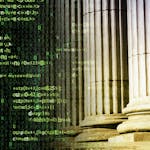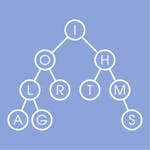Computer Science Terms: A to Z Glossary
Interested in Computer Science, but you keep seeing terms unfamiliar to you? This A-to-Z glossary defines key Computer Science terms you need to know.
Computer science professionals pursue a career focused on various aspects of computing technology and its applications. They possess a diverse skill set encompassing computer programming, algorithms, data structures, software development, database management, computer networks, artificial intelligence, cybersecurity, and system analysis. Computer science professionals are vital in designing, developing, and maintaining computer systems, software applications, and technological solutions. They utilize their problem-solving, logical thinking, and critical analysis expertise to address complex challenges, improve efficiency, enhance security, and drive innovation. Their contributions ensure the smooth functioning of computer systems, enable technological advancements, and support individuals and organizations in leveraging the power of technology.
This computer science glossary can be helpful if you want to get familiar with basic terms and advance your understanding of computer science.
Computer Science Terms: A to Z Glossary
Interested in Computer Science, but you keep seeing terms unfamiliar to you? This A-to-Z glossary defines key Computer Science terms you need to know.
Computer science professionals pursue a career focused on various aspects of computing technology and its applications. They possess a diverse skill set encompassing computer programming, algorithms, data structures, software development, database management, computer networks, artificial intelligence, cybersecurity, and system analysis. Computer science professionals are vital in designing, developing, and maintaining computer systems, software applications, and technological solutions. They utilize their problem-solving, logical thinking, and critical analysis expertise to address complex challenges, improve efficiency, enhance security, and drive innovation. Their contributions ensure the smooth functioning of computer systems, enable technological advancements, and support individuals and organizations in leveraging the power of technology.
This computer science glossary can be helpful if you want to get familiar with basic terms and advance your understanding of computer science.
Computer Science Terms
Algorithm
An Algorithm is a step-by-step procedure or set of rules for solving a problem or performing a computation. Algorithms are fundamental in computer science and form the basis for designing efficient programs. They help solve complex issues by providing clear instructions for processing data and making decisions.
Binary
Binary is a number system that uses only two symbols, typically 0 and 1. In computer science, binary is the foundation of representing data and performing computations in digital systems. Binary digits, or bits, store and manipulate information in computer memory, with each bit representing an on or off state.
Compiler
A Compiler is a software tool that translates high-level programming code written in C, C++, or Java into machine code that a computer can execute. The compiler analyzes the code, checks for errors, and generates an executable file. Compilers play a crucial role in translating human-readable code into instructions the computer can understand.
Encryption
Encryption is converting plaintext or readable data into an encoded form, known as ciphertext, to protect it from unauthorized access or tampering. Encryption techniques use algorithms and keys to convert data into a format that can only be deciphered with the corresponding decryption key. Encryption ensures data confidentiality and security.
Firewall
A Firewall is a network security device or software that monitors and controls the incoming and outgoing network traffic based on predetermined security rules. It acts as a barrier between a private internal network and external networks, filtering and blocking potentially malicious or unauthorized access attempts. Firewalls protect networks from security threats and unauthorized access.
Graph
In computer science, a Graph is a mathematical structure consisting of nodes or vertices connected by edges. Graphs are used to model relationships and connections between entities. They are widely used in network analysis, social networks, optimization algorithms, and data structures.
HTML (Hypertext Markup Language)
HTML is a standard markup language used for creating web pages and applications. It defines the structure and layout of content on a webpage, using tags and attributes to format and organize text, images, links, and other elements. HTML is the backbone of web development and is complemented by CSS and JavaScript.
HTTP (Hypertext Transfer Protocol)
HTTP is the protocol used for transmitting hypertext over the internet. It defines the rules and conventions for how web browsers and servers communicate and exchange data. HTTP facilitates the retrieval of web pages, sending data from client to server, and other interactions on the World Wide Web.
Input/Output (I/O)
Input/Output, commonly abbreviated as I/O, refers to the communication between a computer system and external devices or data sources. Input refers to receiving data from external sources, such as a keyboard, mouse, or network. Output refers to sending data from the computer to devices like displays, printers, or network connections. I/O operations enable interaction between the computer and its environment.
JavaScript
JavaScript is a programming language used primarily for web development. It is a client-side scripting language that runs in web browsers, allowing interactive and dynamic elements to be added to web pages. JavaScript provides functionality for tasks such as form validation, event handling, and manipulating web page content.
Kernel
A Kernel is the central component of an operating system that manages system resources and provides a bridge between software applications and the underlying hardware. The kernel is responsible for memory management, process scheduling, device drivers, and handling system calls. It is crucial in maintaining system stability and facilitating efficient communication between software and hardware.
Machine Learning
Machine Learning is a branch of artificial intelligence that focuses on developing algorithms and models that enable computers to learn and make predictions or decisions without being explicitly programmed. It involves analyzing and discovering patterns from data to make intelligent predictions or take action. Machine Learning has applications in various fields, such as image recognition, natural language processing, and data analysis.
Network
A Network is a collection of interconnected devices or systems that can communicate and share resources. Computer networks allow data and information to be transmitted between devices, facilitating communication and resource sharing. Networks can be classified based on their geographical scope, such as Local Area Networks (LANs) or Wide Area Networks (WANs), and can be wired or wireless.
Operating System (OS)
An Operating System is a software system that manages computer hardware and software resources and provides a platform for running applications. The operating system facilitates tasks such as process, memory, file, and device management. It is an intermediary between users and computer hardware, enabling efficient and secure system operation.
Parallel Computing
Parallel Computing is a computational model where multiple tasks or processes are executed simultaneously, taking advantage of multiple processors or cores. Parallel computing aims to solve complex problems faster by dividing them into smaller tasks that can be executed concurrently. It is used in scientific simulations, data analysis, and high-performance computing.
Query
In databases and information retrieval, a Query refers to a request for data or information from a database or search engine. Queries specify conditions, criteria, or parameters that define the desired data set or search results. Query languages, such as SQL (Structured Query Language), retrieve data from databases.
Recursion
Recursion is a programming technique where a function repeatedly calls itself to solve a problem by breaking it into smaller subproblems. Recursive functions have a base case that defines the terminating condition and recursive calls that solve the subproblems. Recursion is used in algorithms such as tree traversals, factorial calculation, and solving mathematical problems.
Software Development Life Cycle (SDLC)
The Software Development Life Cycle (SDLC) is a systematic process for developing software applications. It encompasses various phases, including requirements gathering, design, coding, testing, deployment, and maintenance. SDLC provides a structured approach to software development, ensuring quality, efficiency, and adherence to project requirements.
Turing Machine
A Turing Machine is an abstract computational model proposed by mathematician Alan Turing. It is used to study the theoretical limits of computation and the concept of computability. A Turing Machine consists of an infinite tape divided into cells, a read/write head and a set of rules for manipulating data on the tape. It can simulate any algorithmic computation.
User Interface (UI)
The User Interface (UI) refers to the visual and interactive elements through which users interact with a software application or system. It includes graphical elements such as buttons, menus, forms, icons, and the layout and design of screens or web pages. UI design focuses on creating an intuitive and user-friendly experience.
Virtual Reality (VR)
Virtual Reality (VR) technology creates an immersive and interactive simulated environment, often through specialized headsets or devices. VR allows users to experience and interact with computer-generated worlds or scenarios, providing a sense of presence and immersion.
Virtual Machine (VM)
A Virtual Machine (VM) is a software emulation of a physical computer system. It allows multiple operating systems to run simultaneously on a single physical machine. Each virtual machine operates independently, with its virtual hardware and resources. VMs provide flexibility, scalability, and isolation, making them widely used in server virtualization and cloud computing.
Web Server
A Web Server is a software application that serves web content to clients in response to their requests. It processes incoming requests, retrieves and delivers web pages, and handles client-server communication. Web servers enable the hosting and delivery of websites and web applications over the internet, using protocols such as HTTP or HTTPS.
XOR (Exclusive OR)
XOR, short for Exclusive OR, is a logical operation that returns true only if the input operands have different boolean values. In computer science, XOR is commonly used for bitwise operations, error detection, and encryption algorithms. It is represented by the symbol "^" or "⊕. "
YAML (YAML Ain't Markup Language)
YAML is a human-readable data serialization format often used for configuration files and data exchange between different programming languages. It is designed to be simple and easy to read, with a syntax that uses indentation and key-value pairs. YAML is known for its readability and is often used in DevOps and configuration management.
Zero-Day
Zero-Day refers to a software vulnerability or security flaw discovered and exploited by hackers before the software developer or vendor becomes aware of it. It is called "Zero-Day" because there is zero-day time to fix or patch the vulnerability before it is exploited. Zero-Day vulnerabilities pose significant security risks and require immediate attention and mitigation.
Conclusion
Congratulations on completing the A-Z glossary of computer science terms! You now have a solid understanding of key concepts and terminologies that are essential in the field of computer science. Whether you're a learner, professional, or technology enthusiast, this glossary will be a valuable resource to expand your knowledge and stay updated with the ever-evolving world of computer science. Keep exploring, experimenting, and embracing the exciting possibilities of computer science!
Learn in-demand computer science skills from industry leaders.
Computer Science Courses | Computer Programming Courses | Machine Learning Courses | Artificial Intelligence Courses | Data Science Courses | Software Engineering Courses | Data Structure Courses
 Join a community of over 100 million learners from around the world
Join a community of over 100 million learners from around the world Learn from more than 200 leading universities and industry educators.
Learn from more than 200 leading universities and industry educators. 70% of all learners who have stated a career goal and completed a course report outcomes such as gaining confidence, improving work performance, or selecting a new career path.
70% of all learners who have stated a career goal and completed a course report outcomes such as gaining confidence, improving work performance, or selecting a new career path.- 100% online
- Flexible schedule
- Mobile learning
- Videos and readings from professors at world-renowned universities and industry leaders
- Practice quizzes
Can’t decide what is right for you?
Try the full learning experience for most courses free for 7 days.Register to learn with Coursera’s community of 87 million learners around the world




